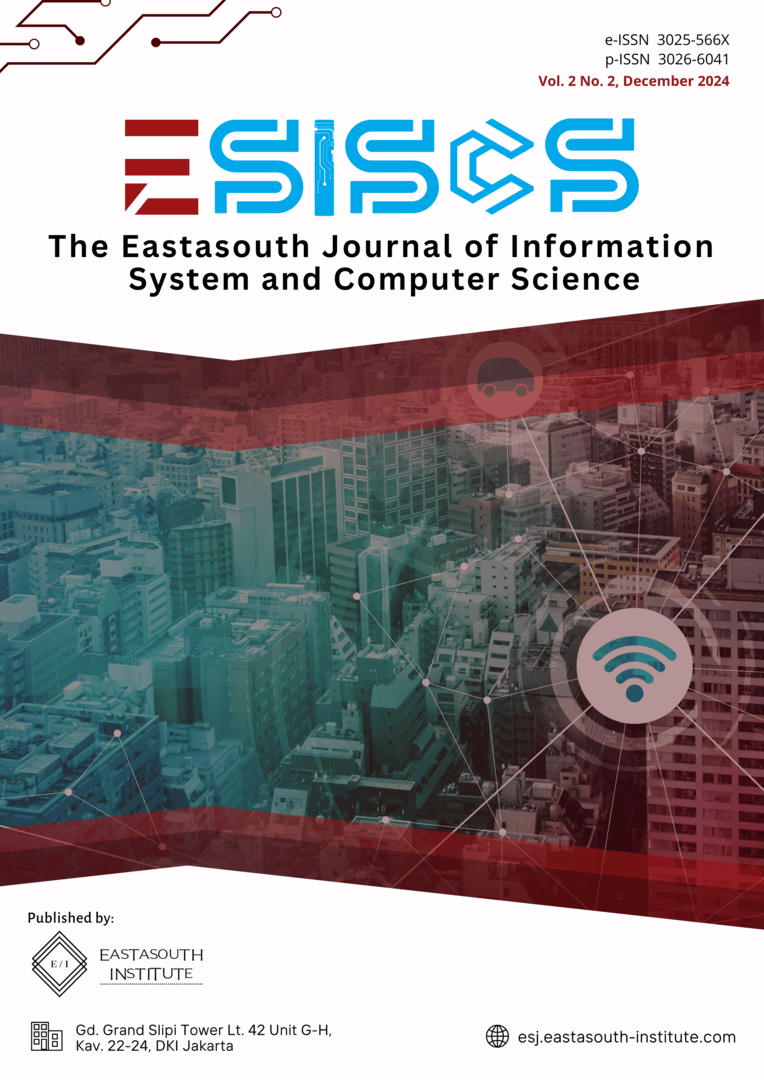The Role of Cloud-Based Analytics in Transforming Logistics Data Management and Reporting
Main Article Content
Abstract
Cloud-based analytics has transformed logistics data management by enabling real-time data processing, improving visibility, and supporting fact-based decision-making. Traditional logistics systems struggle with data silos, delayed reporting, and poor resource planning. Cloud-based solutions dynamically process vast logistics data, allowing real-time monitoring of transportation, inventory, and supplier performance. This improves efficiency by identifying bottlenecks, streamlining routes, and predicting disruptions. AI-powered analytics also enables demand forecasting, warehouse optimization, and automated strategic decisions. Moreover, cloud-based platforms integrate data from suppliers, distributors, and logistics providers, enhancing collaboration, reducing communication gaps, and improving regulatory compliance. Security and scalability further drive adoption, with cloud providers offering encryption, access controls, and real-time threat detection. Flexible cloud infrastructure allows businesses to scale analytics based on demand, cutting infrastructure costs while maintaining high performance. In summary, cloud-based analytics offers real-time insights, predictive capabilities, collaboration, and secure scalability, helping firms improve efficiency, reduce risks, and stay competitive in global supply chains.
Article Details

This work is licensed under a Creative Commons Attribution-ShareAlike 4.0 International License.
References
M. Christopher, “Logistics and Supply Chain Management,” Pearson UK., 2016.
E. Hofmann and M. Ru¨sch, “Industry 4.0 and the current status as well as future prospects on logistics,” Comput. Ind., vol. 89, pp. 23-34., 2017.
M. A. Waller and S. E. Fawcett, “Data science, predictive analytics, and big data: a revolution that will transform supply chain design and management,” Journal of Business logistics, vol. 34, no. 2. Wiley Online Library, pp. 77–84, 2013.
A. McAfee, E. Brynjolfsson, T. H. Davenport, D. J. Patil, and D. Barton, “Big data: the management revolution,” Harv. Bus. Rev., vol. 90, no. 10, pp. 60–68, 2012.
O. Tang and S. N. Musa, “Identifying risk issues and research advancements in supply chain risk management,” Int. J. Prod. Econ., vol. 133, no. 1, pp. 25–34, 2011.
J. Gubbi, R. Buyya, S. Marusic, and M. Palaniswami, “Internet of Things (IoT): A vision, architectural elements, and future directions,” Futur. Gener. Comput. Syst., vol. 29, no. 7, pp. 1645–1660, 2013.
Y. Wang and S. Pettit, E-Logistics: Managing your digital supply chains for competitive advantage. Kogan Page Publishers, 2016.
H. L. Lee, “Big data and the innovation cycle,” Prod. Oper. Manag., vol. 27, no. 9, pp. 1642–1646, 2018.
L. Da Xu, W. He, and S. Li, “Internet of things in industries: A survey,” IEEE Trans. Ind. informatics, vol. 10, no. 4, pp. 2233–2243, 2014.
S. F. Wamba, S. Akter, A. Edwards, G. Chopin, and D. Gnanzou, “How ‘big data’can make big impact: Findings from a systematic review and a longitudinal case study,” Int. J. Prod. Econ., vol. 165, pp. 234–246, 2015.
M. V. Lakhamraju, “Enhancing Enterprise Decision-Making : The Role of Workday Reporting and Dashboards in Large Organizations,” Int. J. Sci. Res. Comput. Sci. Eng. Inf. Technol., vol. 9, pp. 712–721, May 2023, doi: 10.32628/CSEIT2390382.
M. V. Lakhamraju, “Enhancing compensation administration in healthcare: A Workday ERP Perspective,” 2024.
M. V. Lakhamraju, “Driving digital transformation in MedTech: Lessons from transitioning to paperless operations.,” Int. J. Appl. Eng. Technol., vol. 5, no. 3, pp. 1241–1242, 2024, [Online]. Available: https://romanpub.com/resources/Vol.
M. V. Lakhamraju, P. Mittal, V. Agrawal, P. A. Engineering, and S. Technologies, “Impact Of Data Analytics In Business Process Optimization : A New Perspective,” vol. 5, pp. 232–241, 2023.
M. V. Lakhamraju, D. Suresh, P. Mittal, and K. B. Macha, “The Role of Generative AI and Digital Transformation in Modernizing Performance Management Processes: Goal Setting,” Int. J. Sci. Res. Comput. Sci. Eng. Inf. Technol., vol. 11, pp. 2064–2071, Feb. 2025, doi: 10.32628/CSEIT251112236.
P. Mittal, J. S. Saini, A. Agarwal, R. K. Maheshwari, S. Kumar, and A. Singh, “Fake News Detection Using Machine Learning Techniques,” in 2024 4th International Conference on Advancement in Electronics & Communication Engineering (AECE), 2024, pp. 1374–1377.
P. Mittal and R. Malik, “Optimized Physics-Informed Neural Network Framework for Wild Animal Activity Detection and Classification with Real Time Alert Message Generation,” Int. J. Comput. Model. Appl., vol. 2, no. 1, pp. 42–52, 2025.
K. B. Macha, S. Garikipati, N. S. Miriyala, and P. Mittal, “Mitigating Bias in Generative AI: The Role of Explainable AI for Ethical Deployment,” Interantional J. Sci. Res. Eng. Manag., vol. 08, pp. 1–9, Aug. 2024, doi: 10.55041/IJSREM37255.
D. Dave, S. Mehta, N. S. Miriyala, A. Rai, and P. Mittal, “API-First Banking: Evolution of Customer Journey Analytics,” Int. J. Adv. Res. Sci. Commun. Technol., pp. 199–204, Mar. 2025, doi: 10.48175/IJARSCT-23633.

